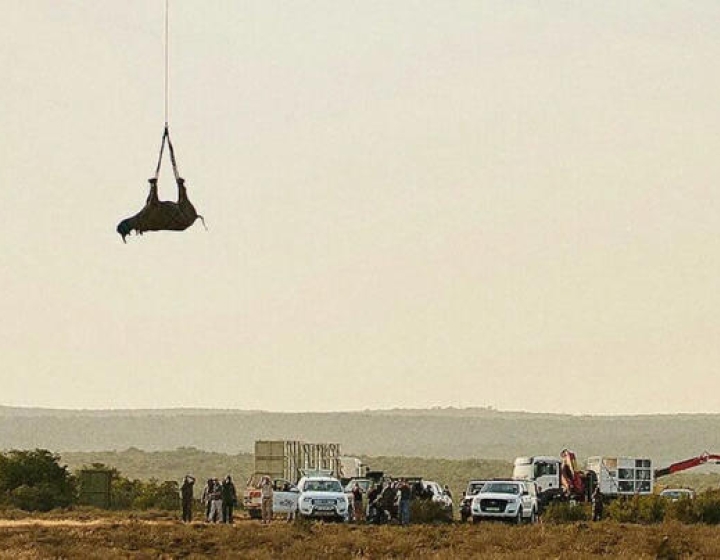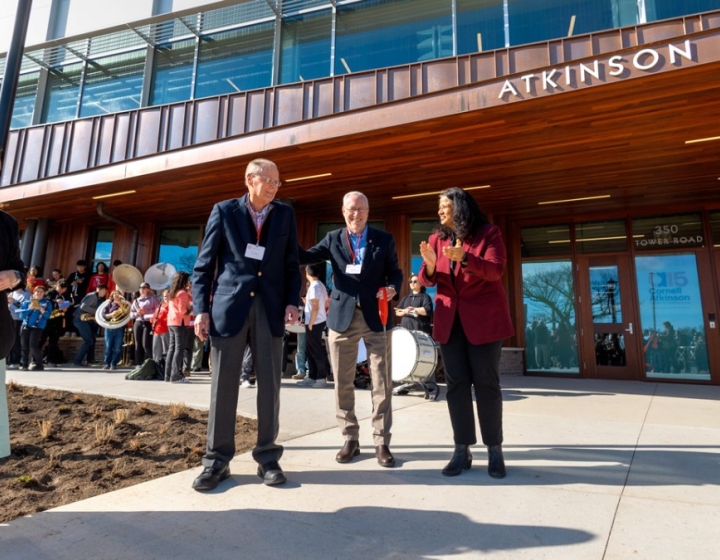Baby bobcat bounces back after hip surgery at Cornell
Dottie the bobcat was only three months old when she came to the Cornell University Hospital for Animals (CUHA). Her keepers at the Claws ‘n’ Paws Wild Animal Park in Lake Ariel, Pennsylvania, had noticed a limp in her hind legs, and suspected she had fallen from a fence in her enclosure.
These native North American felines are known for their agility and climbing prowess, but baby Dottie may not yet have developed her species’ quick reflexes and sure-footedness. She and her brother were born at the zoo and hand-raised by keepers after their mother died of eclampsia a week later.
“She is relatively tame because she has been hand-raised, and now has spent a good portion of her time with us,” says zookeeper Lacey Boandl.
Thus, the keepers were easily able to have the zoo’s local veterinarian X-ray the kitten. The images showed what they believed was a small fracture in Dottie’s femur bone and so they referred her to CUHA for further care.
“When she came to us, we noticed that she was very lame in the affected leg,” says Jamie Morrisey, D.V.M. ’92, section chief and senior lecturer in Zoological Medicine section.
The exotics service team sedated Dottie for radiographs and found that the young cat had septic arthritis in her left hip and a secondary fracture of the femur. “When we saw that, we then placed her on antibiotics to clear the infection before any surgeries,” says Morrisey, who notes it could have happened due to bacteria entering the leg from the original injury and traveling up the leg to the hip.
When her infection cleared and there were no signs of healing of the femur fracture, Dottie was brought back to CUHA, where they prepped her for a surgery known as a femoral head ostectomy (FHO). “The procedure eliminates the ball portion of the ball-and-socket joint so that it shifts the responsibility of weight bearing onto the muscles and tendons instead,” says Dr. Ricardo de Matos, senior lecturer in the Zoological Medicine section.
Dr. Ursula Krotscheck, section chief of Small Animal Surgery, performed the operation. “Over a few months, scar tissue develops around what used to be the hip joint to make a ‘false’ joint which will help the hips support the leg and bear weight,” she explains. “While it doesn’t function as well as a true hip joint, our patients typically have excellent quality of life and fairly good range of motion after they recover.”
While FHO procedures are primarily performed in cats and dogs, the same process of the operation applied to the wild cat. The main difference in having the unusual feline patient was more evident in her handling and care.
“This animal was very human-habituated so was relatively easy to work with,” said Morrisey. “However, wild species are not domestic and typically respond more aggressively to handling and restraint and even minorly painful procedures like an injection. So, we always have to be on our guard, despite how cute she is, that she could give a severe scratch or bite. For domesticated animals we might not sedate them for routine procedures like routine examination and blood collection, but for non-domestic animals we use sedation a lot more.”
Dottie’s FHO surgery went smoothly, and she recovered well, returning to her bright, purring self soon after. “She was walking around her cage and acting playful within one day,” says de Matos. “We did notice a little muscle atrophy of her hind limb, so we prescribed some rehabilitation exercises for her keepers to do with her to help build that muscle back up.”
While Dottie recovered after her surgery at CUHA, students and staff sent her keepers regular updates on how the kitten was doing.
“We had a wonderful experience with Cornell,” says Boandl. “The communication was great — staying up to date on Dottie and knowing how much she was loved there made our job that much easier!”
Unlike most orthopedic surgeries, veterinarians do not ask that FHO patients have complete rest and cage restriction.
“While they need to restrict movement for the first two weeks to allow proper healing of the tissue, use of the leg helps to encourage the formation of a fibrous tissue capsule, the building up of strength and the prevention of atrophy of hind limb musculature,” says Krotscheck. “If they don’t move around, there can be complications such as muscle atrophy and decreased range of motion, so we ask that patients start passive range of motion exercises immediately, and for more exercise regimens during the next few weeks.”
Dottie is now home at the Claws ‘n’ Paws Animal Park. To ensure Dottie heals correctly, Boandl and her colleagues are keeping her on an exercise regimen, making the bobcat walk in circles to ensure she continues to strengthen her injured leg.
“She enjoys running around and playing with her enrichment,” Boandl says. “Dottie is doing excellent.”
Story: Lauren Cahoon Roberts
Video: Carol Jennings/Cornell Vet





